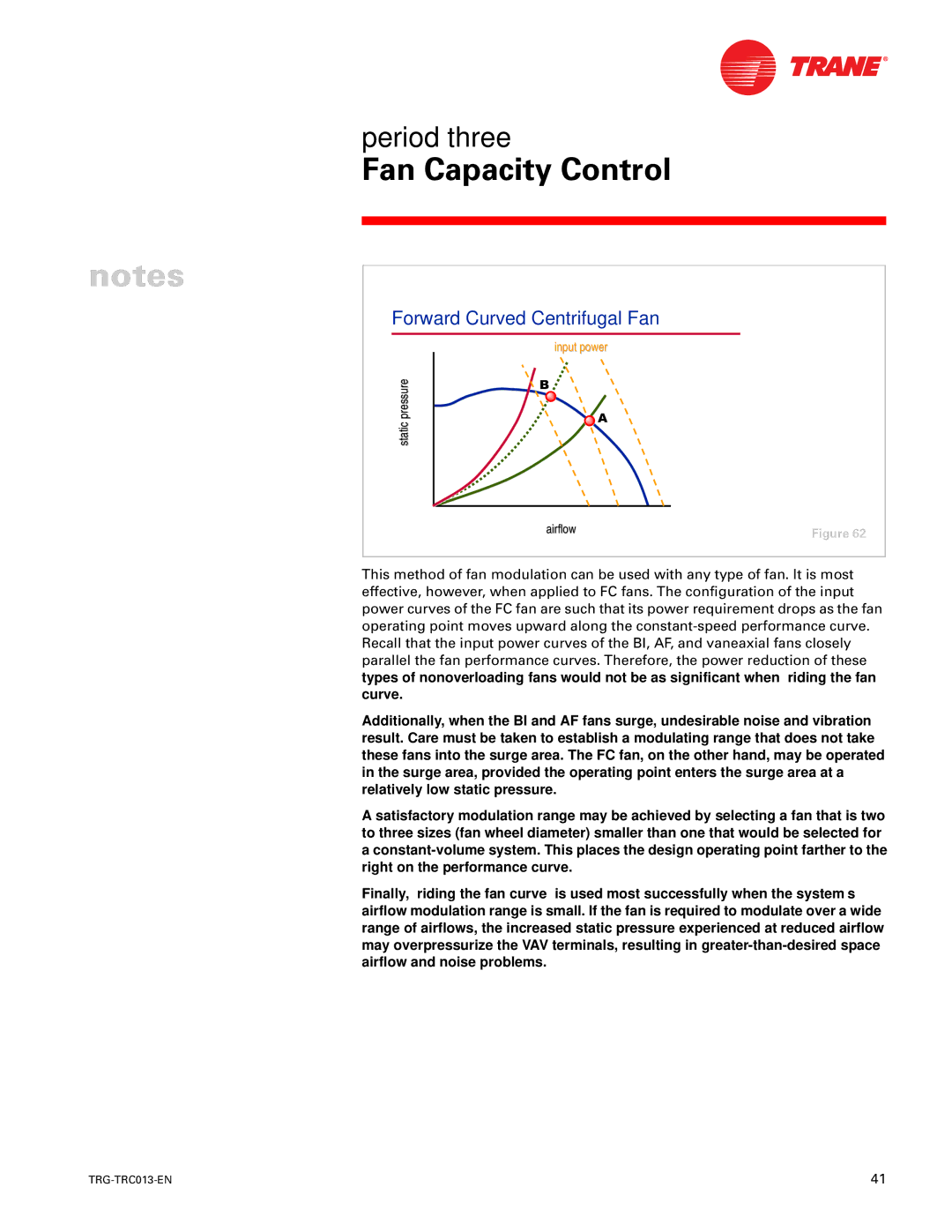TRG-TRC013-EN specifications
The Trane TRG-TRC013-EN is a comprehensive guide that provides valuable insights into the technical specifications, features, and operational characteristics of Trane's advanced HVAC systems. This document serves as an essential resource for engineers, contractors, and facility managers looking to optimize their heating, ventilation, and air conditioning solutions.One of the standout features of the Trane TRG-TRC013-EN is its emphasis on energy efficiency. Trane has integrated state-of-the-art technology into their HVAC systems, allowing for reduced energy consumption and lower operational costs. This is particularly important in today's environmentally conscious market, where businesses are increasingly seeking sustainable solutions.
The guide outlines various advanced control technologies employed in Trane systems. These control systems enable seamless integration of HVAC components, enhancing overall system performance. Features such as variable speed drives and intelligent sensors allow for precise control of heating and cooling outputs according to real-time demand, contributing to energy savings and improved indoor comfort.
Additionally, the TRG-TRC013-EN highlights Trane’s commitment to reliability and durability. The HVAC systems are designed with robust materials and engineered to withstand challenging operating conditions, ensuring long-lasting performance and minimized downtime. This characteristic is crucial for commercial facilities that require consistent climate control to maintain productivity and comfort.
Another key aspect covered in the guide is Trane’s focus on indoor air quality (IAQ). Advanced filtration options and ventilation strategies are discussed, showcasing how their systems can effectively improve air quality while maintaining energy efficiency. Enhanced IAQ is increasingly recognized as a vital component of overall health and well-being in indoor environments, making it a priority for Trane's product development.
Furthermore, the TRG-TRC013-EN provides details on compliance with various industry standards and regulations, ensuring that users can depend on their systems to meet both local and international requirements. This not only simplifies the planning and installation process but also demonstrates Trane's commitment to safety and quality.
In summary, the Trane TRG-TRC013-EN guide serves as an invaluable tool, highlighting the innovative technologies, energy-efficient features, and reliable performance of Trane HVAC systems. With a strong focus on sustainability, indoor air quality, and regulatory compliance, Trane continues to position itself as a leader in the HVAC industry, catering to the ever-evolving needs of commercial facilities.

